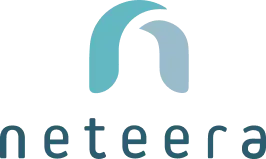The healthcare industry is experiencing a significant shift toward contactless patient monitoring, a groundbreaking approach that blends advanced technology with proactive care strategies. This innovation reshapes how healthcare providers manage chronic conditions, optimize workflows, and improve patient care.
Contactless solutions help empower providers and patients alike by delivering real-time health data and reducing the need for in-person monitoring. This supports efforts for smarter care and greater efficiency.
Why Contactless Monitoring Is Essential for the Future of Care
Empowering clinicians with actionable insights
Contactless patient monitoring provides healthcare professionals with real-time data on vital signs, such as blood pressure, heart rate, respiratory rate, and bed activity. This continuous flow of information helps equip clinicians with the tools they need to make informed, proactive decisions.
When providers can access accurate and timely data, they can create personalized treatment plans, prioritize high-risk patients, and improve care coordination. This collaborative, data-driven approach can reduce complications and help enhance outcomes, ensuring that care is tailored to each patient’s needs.
Benefits of contactless patient monitoring
Support for value-based care models
Contactless patient monitoring solutions align with value-based care principles by emphasizing prevention and risk mitigation through early detection and proactive interventions.
Reduced hospital readmissions
Continuous monitoring can enable early detection of changes in a patient’s health, potentially allowing for timely interventions that may prevent hospital readmissions. This can also help healthcare organizations avoid financial penalties associated with readmissions.
Enhanced efficiency during staffing shortages
Amid a global shortage of healthcare workers, contactless monitoring is designed to help smaller clinical teams manage larger patient loads. Providers can focus on high-priority cases, optimizing care delivery.
Cost savings for patients and providers
Contactless monitoring can potentially reduce healthcare costs across the board by improving chronic disease management and enabling early interventions.
Revenue opportunities for providers
Healthcare organizations may generate additional revenue streams by billing for high-quality patient monitoring services, enhancing financial stability.
The Role of Technology in Smarter, More Efficient Care
The effectiveness of contactless patient monitoring goes beyond simply collecting data—it lies in how that data is used to support smarter systems and workflows. Healthcare organizations can maximize the benefits of this technology by:
1. Choosing the right tools
Select devices that meet patient-specific needs while integrating seamlessly with existing healthcare systems. Devices should offer robust capabilities for continuous monitoring without requiring active patient involvement.
2. Streamlining workflows
Efficient processes for collecting, analyzing, and sharing data are essential for enabling clinical teams to make quick, informed decisions. Automated alerts ensure providers can focus on actionable insights without becoming overwhelmed.
3. Prioritizing privacy
Data security is crucial to maintaining patient trust. Organizations must comply with HIPAA regulations and uphold stringent privacy measures when implementing contactless monitoring systems.
Overcoming Challenges in Contactless Patient Monitoring
While contactless monitoring offers immense potential, healthcare providers must address key challenges to ensure successful implementation:
Managing data overload
Using advanced analytics and smart alert systems, clinicians can filter and prioritize data, allowing focus on pre-determined information that directly impacts patient care.
Ensuring equity in access
To make care more inclusive, healthcare organizations must expand access to monitoring tools for underserved and remote populations.
Integrating with existing workflows
Seamless integration into existing clinical processes is essential. Platforms should simplify adoption by offering compatibility with electronic health record (EHR) systems and user-friendly interfaces for healthcare providers.
A Connected Future of Healthcare
The combination of contactless patient monitoring, telehealth, and virtual care revolutionizes healthcare, driving a shift toward more patient-centered, technology-enabled solutions. By leveraging these innovative tools, providers can:
- Improve care coordination
- Enable timely interventions for at-risk patients
- Reduce costs while enhancing accessibility for underserved communities
How Neteera Leads the Way in Contactless Monitoring
Neteera’s platform simplifies care delivery through continuous, frictionless monitoring that benefits both providers and patients:
- Near-real-time insights: Providers can gain access to critical health data, which could help them detect warning signs before complications arise.
- Ease of use: Patients can maintain their regular routines without actively engaging with the device.
- Elevate standard of care: Early detection and proactive care can lead to better patient care and reduced hospitalizations.
Partner With Neteera to Redefine Patient Monitoring
Neteera’s innovative solution is designed to empower healthcare organizations for the future of care. By providing seamless, continuous patient monitoring, we can help providers elevate the standard of care, reduce costs, and optimize workflows—all while prioritizing patient care and privacy.
Contact us today to schedule a demo and explore how Neteera can transform your approach to patient monitoring.
Everything You Need to Know About Contactless Patient Monitoring
1. What is contactless patient monitoring?
Contactless patient monitoring uses advanced sensors to track vital signs, such as heart rate and respiratory rate, without requiring physical contact with the patient.
2. How does contactless monitoring benefit patients?
Patients benefit from continuous monitoring that detects health changes early, enabling timely interventions and potentially reducing hospital readmissions.
3. How can contactless monitoring help healthcare providers?
Contactless monitoring provides real-time data, streamlines workflows, and allows clinicians to prioritize high-risk patients, improving care efficiency during staffing shortages.
4. Is contactless patient monitoring secure?
Yes. Neteera’s platform complies with HIPAA regulations and prioritizes data privacy to ensure patient trust and care.
5. How does Neteera’s platform support value-based care?
By enabling early detection and proactive interventions, Neteera helps providers elevate the standard of care, potentially reduce costs, and better align with value-based care models.
6. Can Neteera’s platform integrate with existing healthcare systems?
Yes. The Neteera System integrates with EHR systems, ensuring providers can access comprehensive patient data.


